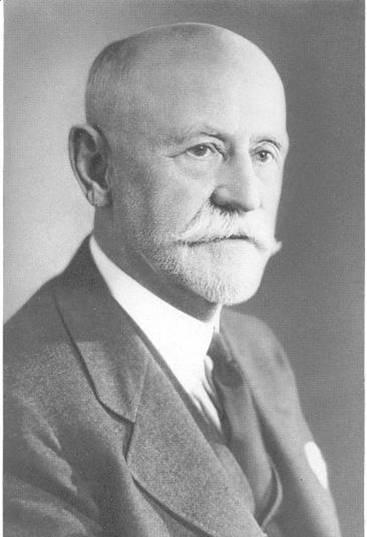
Dr. James B. Herrick, born in Oak Park, is well known in medical history as the first physician to observe and describe sickle-cell disease and was one of the first physicians to describe the symptoms of myocardial infarction.
Herrick was a grandson of Oak Park pioneer settler Joseph Kettlestrings. His mother, Dora Kettlestrings, was the first pioneer settler child born in the village, and his father, Origen W. Herrick, came to Oak Park as a teacher in 1859 at the invitation of James Scoville.
Herrick graduated with the first senior class of Oak Park High School in 1877, and went on to attend a religious college in Mount Morris, IL, later graduating from the University of Michigan. In 1883 he returned to Oak Park High School to teach while also attending Rush Medical College. He interned at Cook County Hospital and began his medical practice as an assistant to Dr. Charles W. Earle of Oak Park. He was soon appointed staff physician at Presbyterian Hospital in Chicago and maintained that association most of his life, while also teaching at Rush Medical College.
Herrick’s first significant discovery was in 1910, when he identified sickle-shaped red blood cells in a student from Grenada. These oddly shaped blood cells do not carry oxygen as well as normal blood cells. The disease was known as Herrick’s syndrome for many years before the name sickle cell anemia (now sickle cell disease) was adopted.
Herrick’s insights and accomplishments relative to heart disease began, ironically, with a prominent Oak Park resident, John Farson, who suffered a heart attack after shoveling snow in January 1910. When Farson’s condition worsened, Herrick was one of three prominent Chicago doctors called in as counsel. This was his “seminal initial case” in his study of heart disease.[i]
In 1912 Herrick published a paper in the Journal of the American Medical Association proposing that coronary thrombosis, a blockage caused by a blood clot in a coronary artery, led to symptoms of a heart attack, but was not necessarily fatal. His paper wasn’t the first to make such a proposal and it didn’t gain much attention. But his 1919 paper on heart disease received more attention, and the first paper was then seen as most influential.
By 1918 Herrick had pioneered the use of electrocardiography, which measures the electrical activity in the heart. He was famous for encouraging doctors to look at all aspects of patient care, and his work on brain inflammation, anemia, and arthritis were singled out by colleagues.
During the Spanish flu epidemic in 1918, Herrick directed the influenza ward of Presbyterian Hospital. His approach and advice were remarkably like “flattening the curve” during the Covid19 pandemic. It began with segregating those who are ill and prohibiting public gatherings to lessen the number of contact infections. Limiting contact, he argued, should also slow the spread of the disease.
Throughout his career, Dr. Herrick received numerous awards and accolades for innovative methods, teaching and research. He was a founder of the Chicago Heart Association (later American Heart Association) and in 1939 received the American Medical Association’s Distinguished Service Medal.
[i] https://www.ajconline.org/article/S0002-9149(08)00176-8/fulltext
Submitted by John Elliott and Mary Ann Porucznik, 2023